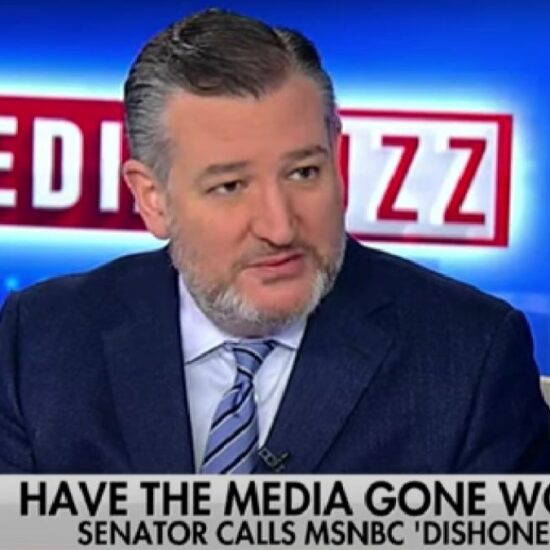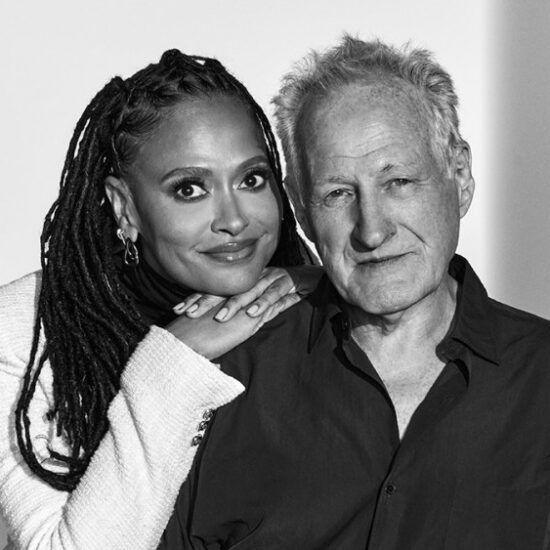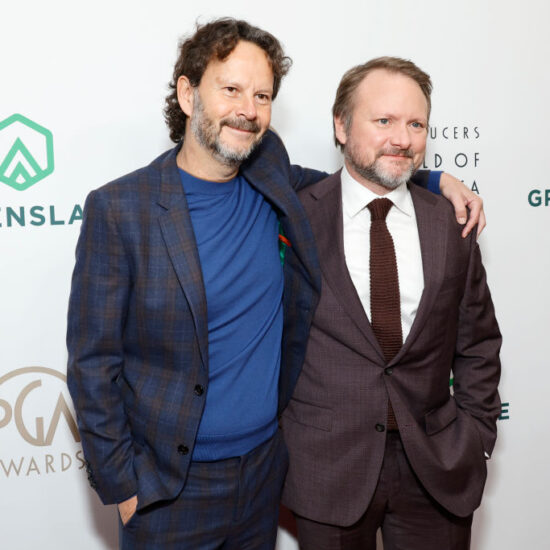
This is Hot Pod, The Verge’s newsletter about podcasting and the audio industry. Sign up here for more.
I hope you all had a great week! Hot Pod Summit was a lot of fun — it was great to meet so many of you in person and chat about some of the biggest issues in the industry.
We’ll have more on that below, but first, some acknowledgments. Big thanks to our partners at work x work and the whole On Air Fest team for bringing the event together as well as to the Wythe Hotel for hosting us. Also, I absolutely would not have made it through this without the help of my Verge colleagues Kara Verlaney, Esther Cohen, T.C. Sottek, Helen Havlak, and, of course, Jake Kastrenakes. Plus, we were so lucky that the Decoder team was down to put on their first live show at the summit. You can hear Nilay Patel’s interview with Conal Byrne, CEO of iHeartMedia’s digital audio group, right here.
And finally, thank you to our sponsors for the event: AdsWizz and Subtext. AdsWizz is a self-serve advertising platform for creating and running audio ads. Subtext is a text messaging platform designed to connect creators directly with their subscribers.
It takes a village to make a podcast industry event, folks! Now, some highlights from the summit.
YouTube announces that podcasts are coming to YouTube Music
Love to break some news at Hot Pod Summit. I had the opportunity to sit down with Kai Chuk, head of podcasting at YouTube, and Steve McLendon, Google’s product lead for podcasting, and talk about their plans for the medium. The crux of it: podcasts will soon be available on YouTube Music in both the free and paid versions. It marks a major departure from YouTube’s video-first approach to podcasting so far.
“There’s a whole new cohort of users and creators who we haven’t really been optimizing for as well as we can,” said YouTube podcasting chief Kai Chuk. “That’s something that we do want to change.”
They were keenly aware of YouTube’s new-ish position of power in the industry and also the drawbacks of their platform. Although it has become the most-used podcast platform on the market, it is still best for video podcasts. Audio-only podcasts function in the same way but with a static image and none of the listening features consumers are used to with other platforms. “It’s pretty obvious that we haven’t had a great solution for audio as of yet. And there’s a whole new cohort of users and creators who we haven’t really been optimizing for as well as we can,” Chuk said. “That’s something that we do want to change.”
On YouTube Music, listeners will have access to the kinds of features they have come to expect on other platforms, like background listening, downloads, speed control, and the ability to switch between video and audio. McLendon also said the team is working on integrating RSS into the platform; at launch, though, the platform is essentially just enabling a better consumption experience for existing video podcasts. While that all sounds grand, YouTube Music is much smaller than YouTube proper: 80 million subscribers versus 2.5 billion users. YouTube’s edge is its searchability and reach. Chuk and McLendon said it does not have to be an either / or approach.
“I don’t expect podcasts to only live on YouTube Music, that’s the only way that people consume podcasts on YouTube,” Chuk said. “We expect there to be kind of a back and forth between the two.”
McLendon used his own experience as an example, when he found a Kevin Systrom podcast interview on YouTube when he was at his work computer and then switched to the audio version when he got into his car to go home. Allowing consumers to hop from one to the other is going to be a priority. “We’ll bridge some of those experiences in seamless ways for the user and really center on the user journey,” McLendon said.
That is already how many people use YouTube podcasts anyway (or I do, at least): finding it through Google and then switching to a listening platform. The key, I think, will be getting them to stay in YouTube’s ecosystem. Right now, you can start something on YouTube and finish the rest on Spotify or Apple. I’ll be curious to see whether and how users will be directed straight to the YouTube Music platform — and whether this could help bulk up YouTube Music’s subscriber numbers.
How the economics of audiobooks may change
I was also really pumped to dig into the world of audiobooks, which got a new big player in Spotify when the company completed its purchase of Findaway last year. I spoke with Spotify’s head of audiobooks, Nir Zicherman, as well as author and podcaster Gretchen Rubin and Penguin Random House Audio’s senior vice president of production, Dan Zitt. With the whole pipeline represented — creator, publisher, and platform — we were able to examine how Spotify’s plans for shifting the business model of audiobooks could impact the industry.
As an extension of the traditional publishing economy, the audiobooks model has been pretty steady for a while now. Consumers, who mostly come to the medium as book readers, either buy premium titles a la carte on something like Apple Books (usually for $10–$20 a pop) or have a subscription to Audible or audiobooks.com for about $15 a month. It keeps prices closely in line with print prices. Spotify has chosen the a la carte route to start, but Zicherman says that the company will seek to expand how it monetizes audiobooks.
“Applying a blanket approach to everything — every piece of content, every creator, just like in podcasting — I think actually hurts the industry,” Zicherman said. “So the future that I see at Spotify is many different business models to support all the different types of podcast content that exists and all the different types of audiobook content that exists.”
Former Spotify content and advertising chief Dawn Ostroff mentioned at an investor event last year that audiobooks could be available for free, supported by advertising. Zicherman would not say whether Spotify would go down that path but only said that the model would be “interesting” (cryptic!). He also mentioned that Spotify is looking into a Netflix-style subscription option as well.
Rubin, who has another book coming out this spring, went through the potential benefits and drawbacks of using ad-supported distribution for her own work. “On the one hand, a listener might really like advertising support, because then that means it’s free to them. So that could bring in people to my work that wouldn’t otherwise get it,” she said. “On the other hand, we all know that if people are used to paying for something, you would rather them keep paying for it, rather than starting to give it to them for free. Because once people give something for free, it can be hard to reel that back.”
Zitt was also intrigued, if concerned, about what it could mean for the ability of creators to make a living. “I think a menu of options in how people sell content is a good thing — with the aside that content creators are being paid fairly for the content,” he said. “Some of the models I’ve seen that have come and gone have not been beneficial to the artist, only to the platform.”
Can narrative podcasts make money?
This is Nick Quah’s area, and unfortunately, his flight from Idaho was snowed out. So I stepped in with varying degrees of success. (You’ll have to ask the people who witnessed it.) Big thanks to John Perotti, co-founder and CCO of Rococo Punch, and Kate Osborn, EVP of development at Kaleidoscope, for putting up with me. They gave great insight into how you get a premium narrative podcast made these days, especially when studios can opt for chat shows that are cheap to make with potentially high returns.
So how much does it cost to make a decent limited-run narrative podcast? “$250,000 is the floor to make truly good narrative, engaging content,” said Osborn. “I’d rather make less than make it for under the resources that we [need].” And if the story requires travel or lengthy investigations, that will push the price tag up even higher.
Perotti explained how, when he went out pitching the show that became last year’s critically acclaimed series Welcome to Provincetown, he got no bites. So he self-financed the project until getting investment from Stitcher’s Witness Docs. The risk was worth it. “Because we did it that way, we own the feed. Not only do we own the feed, it’s going to be a television show, or at least it’s been optioned for television,” he said. “So it’s like, yeah, that’s a lottery ticket, I get it. But that’s value.”
Getting optioned for TV may be a lottery ticket for podcast creators, but there are other ways to monetize their shows. “The IP game is great, but that’s not all it is, right?” Osborn said. “It could be a play, it could be a live show, or literally a physical product… doing all of those things together, I think, makes sense.”
iHeartMedia’s Conal Byrne on trading exclusivity for broad reach
Verge editor-in-chief Nilay Patel sat down with Conal Byrne, CEO of iHeartMedia’s digital audio group, for a live interview. They covered a lot of ground, but one theme that kept coming up over and over again was iHeart’s strategy to get as wide an audience as possible and letting places like Spotify and Audible make plays for exclusive content.
“I choke my audience if I choose to pull my RSS feed out of a distribution app, because people who go there and expect it there won’t see it anymore,” Byrne said. “It’s why we widely distribute. Otherwise, I’d be sitting up here saying, ‘We are really working hard to get everybody on the iHeartRadio app.’ The business and the economics of podcasting today still sit with the creator and the publisher, because you own the pipe that you distribute your shows through. I haven’t found a business model that proves it differently, so I think it behooves all of us to plug that pipe into as many distribution points as possible.”
“We have about 70-ish shows in the iHeart Podcast Network that drive over 1 million monthly downloads or more,” Conal Byrne, CEO of iHeartMedia’s digital audio group, said. “The only reason we have that number is because of broadcast radio marketing.”
Byrne also insisted that marketing podcasts on broadcast radio has been invaluable for the company’s podcast business. “We have about 70-ish shows in the iHeart Podcast Network that drive over 1 million monthly downloads or more,” he said. “The only reason we have that number is because of broadcast radio marketing.” That is much easier to accomplish, of course, when your parent company owns more than 860 radio stations across the country and would benefit from other podcast companies following in kind!
As Nilay noted, there are risks with casting such a wide net. He asked Byrne about a Bloomberg report last year that found iHeart had worked with a firm called Jun Group to buy podcast downloads through freemium mobile games. First, Byrne denied doing such a thing. Then he qualified the practice. “We have experimented with Jun Group across the years. I think our stats were something like never more than 1 percent, 2 percent, 2.5 percent of our downloads in any given month,” he said. “We don’t use it anymore.”
It was a fascinating conversation, and you can listen to it wherever you get podcasts or check out the transcript on The Verge.
Whew that was a long one! I slept for like 15 hours after this event. I’ll need a beat for the next one. See you next week.













